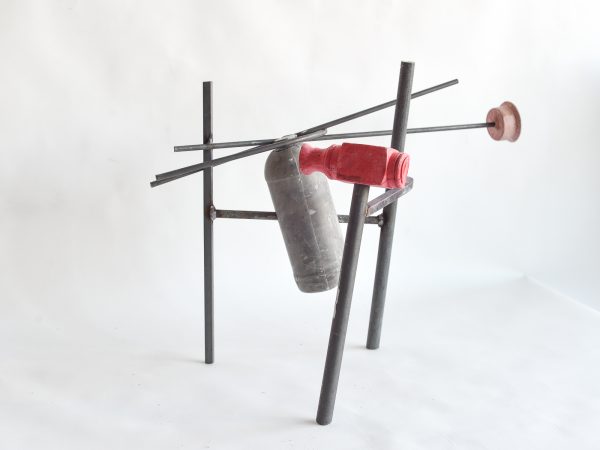
Photo: Peter Griffiths
In April 2021 Gillian’s application to Arts Council England for an award from their ‘Developing Your Creative Practice’ fund was successful. She carried out her research project Multiple Forms: New Skills between July and December 2021.
“The main focus of the research was to learn new skills in making moulds and casting in Jesmonite. I have been using wood, found objects and cast concrete in my constructed steel sculpture for several years. I wanted to find alternative methods to create forms which gave mass to the compositions, could be repeated and were more durable. I was also interested to find out how casting would change the form and meaning of found objects by transposing them into another material, and allowing their form to be altered.
Having spent some time looking at how other artists used cast elements in their work, and finding out a little about the properties and process of working with Jesmonite, I went on a two-day course at London Sculpture Workshop; Casting in Jesmonite. The course was very useful in introducing me to the process. I ordered materials based on my experience there and started to experiment in the studio. At the time there were some parts of the course which I thought wouldn’t be useful to me, which surprisingly I then did find myself using back in the studio, for instance terrazzo and colour marbling.
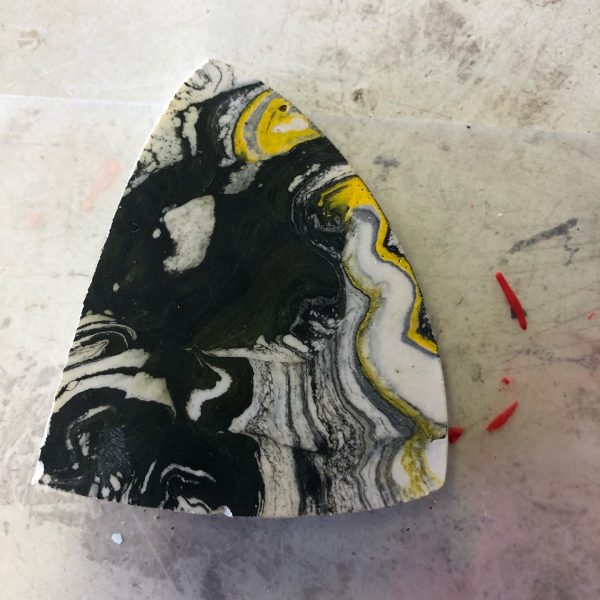
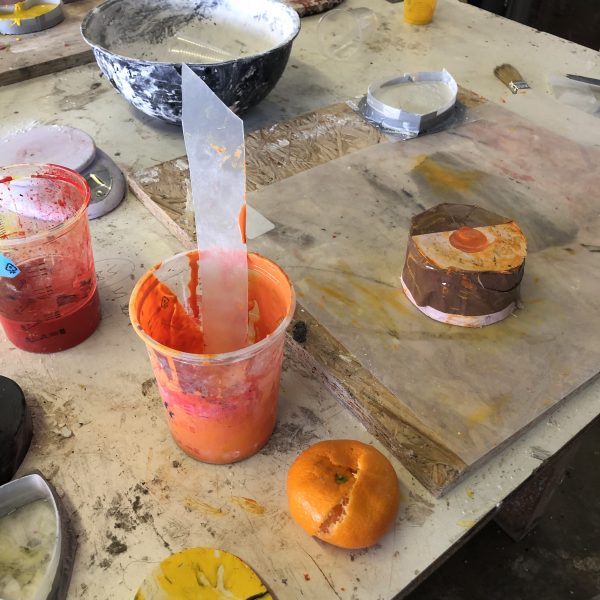
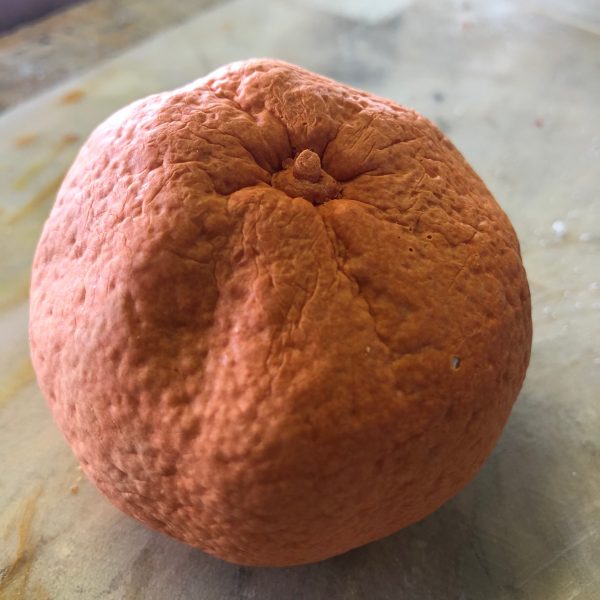
I then attended a second two-day course at LSW; Silicone Mould making, which gave a more in-depth instruction on how to make a two-part mould. This process was quite involved with many different stages and used a lot of additional materials such as clay and plaster which I don’t usually work with or keep in my studio.
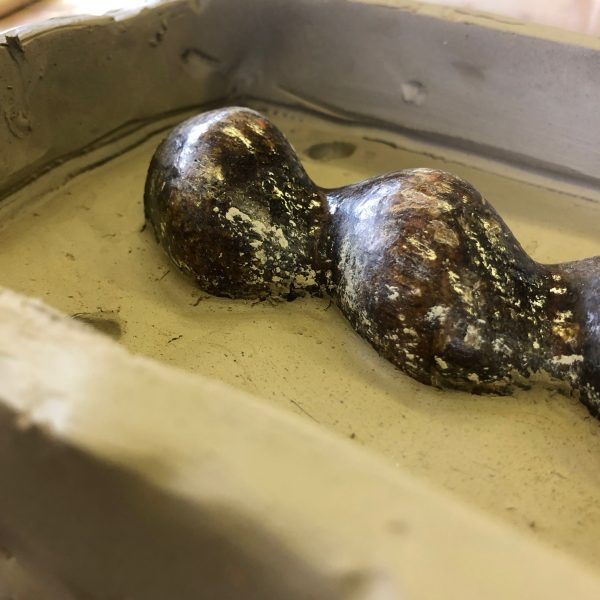
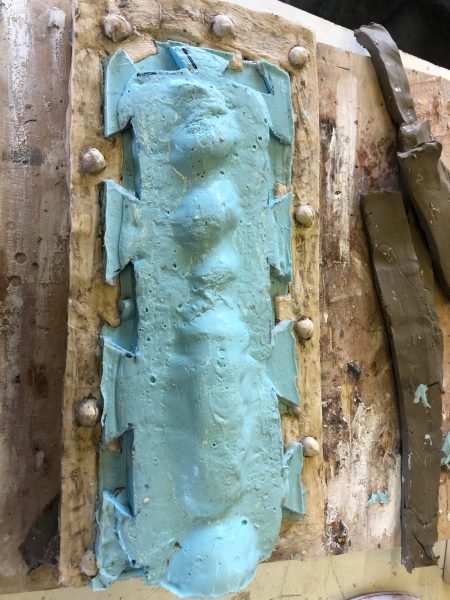
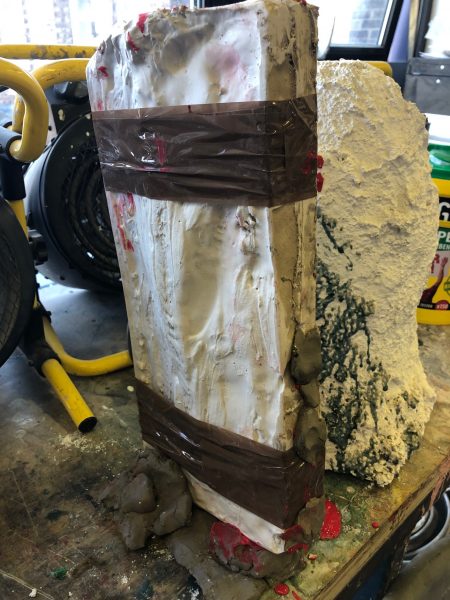
Back in the studio I spent quite a lot of time becoming familiar with the materials; experimenting with simple moulds and mixes, and adding in different bulking materials such as sand and pebbles to the Jesmonite. One of the unexpected challenges was making choices about colour at an early stage in the making process, something I hadn’t really engaged with before; I was surprised at how hard I found it!
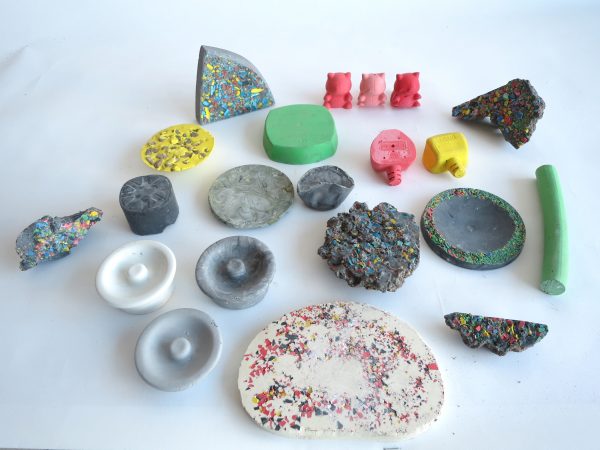
I have constructed several smaller sculptures combining steel with Jesmonite forms, both simple shapes and cast objects. The cast objects are more complex, interesting forms, but more difficult to achieve. I tried various ways of joining and working into the casts – drilling, cutting, gluing as well as casting steel and objects into the Jesmonite.
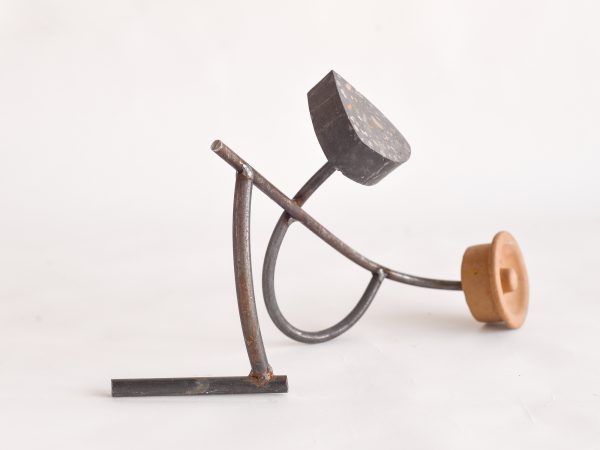
Photo: Peter Griffiths
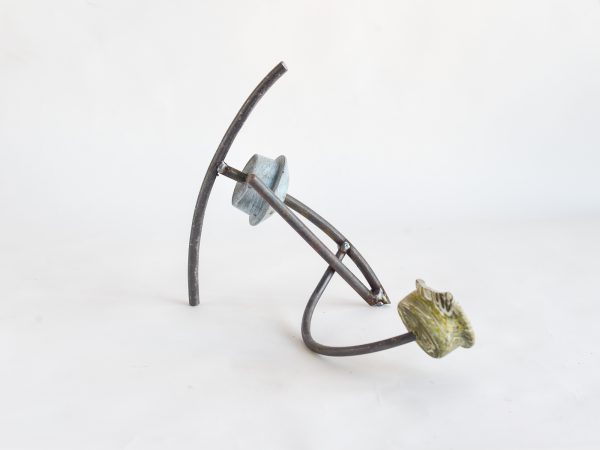
Photo: Peter Griffiths
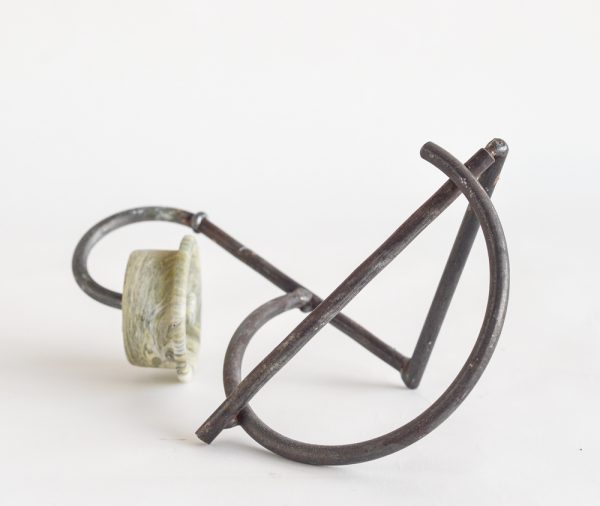
Photo: Peter Griffiths
My working methods have always been very immediate and responsive, working directly with the final materials and keeping process to a minimum. Casting is a multi-stage, multi-material process. Engaging with this new process has caused me to reflect on how I work, what my intentions are, what is important and what I am looking for in a material or process in terms of expressing an idea. I recognise that I need to reconsider some of these to get the best from this new approach in production, yet also maintain certain basic working principles as they suit my thought processes and ability to be responsive in order to make more surprising work. I am now developing simpler, less time-consuming ways to produce moulds that fit in better with both my time constraints and working practice.
Learning a new skill has given me an insight into how I learn and absorb technical and practical information and strategies I need to use to embed it. I found out that I am more practical and adaptable that I gave myself credit for, which has boosted my confidence to try more new ideas and techniques.
As an artist who also delivers workshops it has been really useful being ‘on the other side’; a learner rather than ‘the expert’. I am sure that I will be passing on some of the skills I have learnt to others through workshops in the future, when I am more confident and experienced.
I will definitely continue to use casting in Jesmonite as an integral process in my sculpture making. It will probably replace using concrete to create mass, as it is much less friable and likely to break. I will carry on casting found objects and interpolating them into my steel constructions, considering how the transposition into a new material affects how we see them. I am still getting to grips what kind of forms to cast and ways to get the results I want. I have decided that casting found objects rather than creating new forms is more relevant to my aim to combine subjectivity and shared experience with abstract sculpture to give it a more contemporary and wider appeal. Casting objects may replace using actual found objects altogether, although I will probably mix the two.
I hope that I will find using colour will become easier as I do it more – I already have discovered that using marbling techniques to mix colour creates a more nuanced effect than solid colour; I will continue to experiment.
I will also continue to try out alternative construction methods to extend how I can build sculpture from components made from different materials. This will also extend to continuing to invent ways to present sculpture without using a conventional white plinth.
I have an exhibition in London coming up in 2023 where I plan to show a series of works that are a development from this period of research”.
